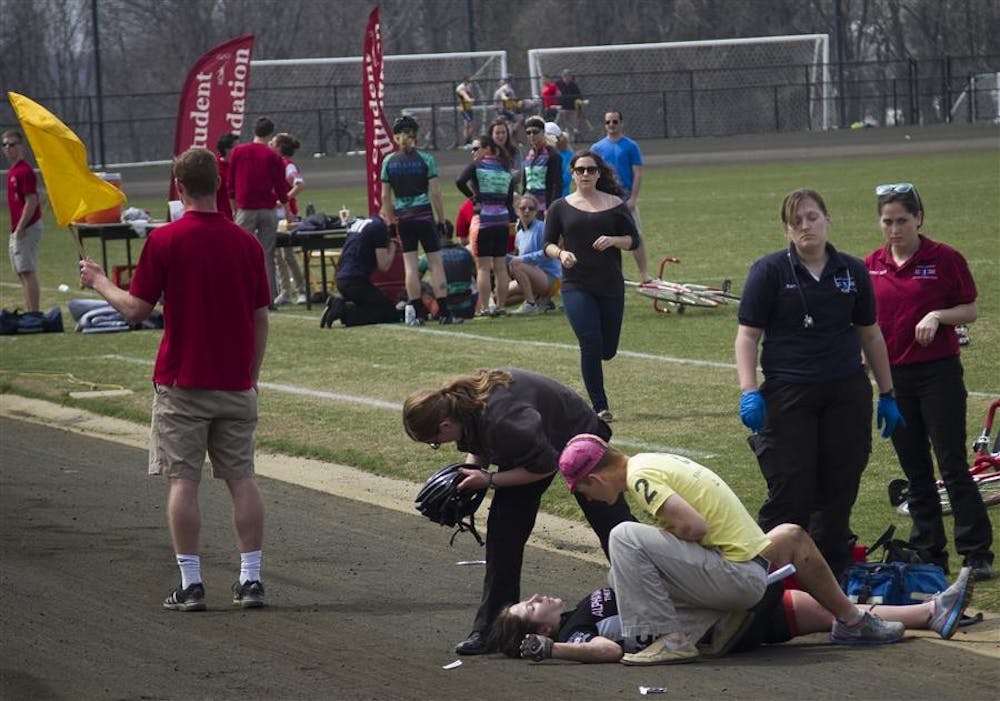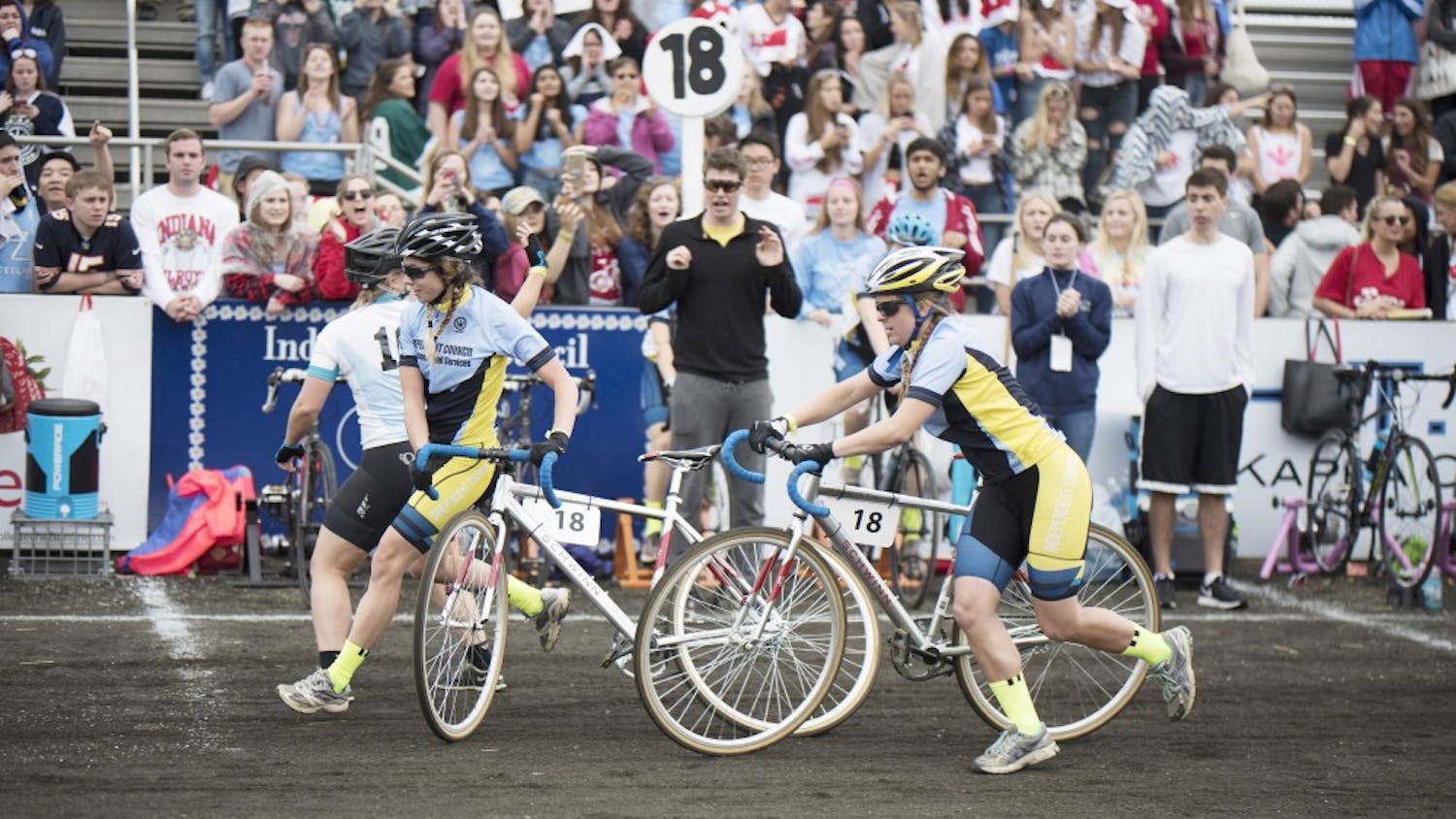The track at Bill Armstrong Stadium is the only cycling track in the country made of cinder, and it’s been that way since it was first built.
“Cinders are pretty nasty,” senior Delta Upsilon rider Aaron Starkston said. “I’ve had my fair share of cinder tattoos.”
Nonetheless, Starkston said cinder is the safest material to crash on because it is the softest. He broke his elbow March 9 after falling off his bike during a training ride on open road.
Miss-N-Out on April 6 was Starkston’s first day back on the track since the injury. Though he had less than a week to get re-acclimated to the cinder, his experience as a three-year rider has him prepared for the unusual surface.
Helen Han, a senior rider for Ride On, has also had her share of “cinder tattoos.”
“You really can’t prepare for the track,” Han said. “We do lots of work on the rollers. Same with road rides. But there’s nothing quite like it. It’s a really unique feel.”
Unlike many asphalt cycling tracks, the track at Bill Armstrong is relatively flat around the turns. At the same time, cinder offers less traction than traditionally paved surfaces.
The result: Riders will crash if they take turns too fast.
“On the corners your back wheel slides out — fishtailing — and you have to keep your body relaxed,” said senior Brad Koszuta, who has coached Ride On for one year and is a rider for Hillel. “It takes some getting used to. There’s no substitute for experience.”
IU relies heavily on coal-burning power plants for its electricity. Cinder is made from the remnants of burnt coal, so it was a logical substance to use for the track at Bill Armstrong.
Wally Hansford is a crew leader at the IU Physical Plant and has helped maintain the cinder track since 1981.
He said the track was originally intended for running only. Little 500 came later, and the rest is history.
“Because the first track they rode on was cinders, which was a common substance for people to use, tradition says that it has to be a cinder track,” Hansford said. “It’s all about tradition.”
Hansford and his team maintain the track every day. The process includes packing the cinder down with a steamroller, watering the track and using a blower to remove loose pieces off the top, in that order.
Han, like most riders, said she prefers a moist track. Otherwise, loose pieces of cinder fly around as if part of a dust storm.
Hansford makes sure that doesn’t happen and said watering the track is the most important part of daily track maintenance.
“The moisture is the most important thing — we put water on it every day,” he said. “It’s the only substance that holds it together like glue. When it dries out, it would be like riding on sand. If it’s cloudy and moist on race day, I’m the happiest guy out there.”
Riders can be confident Hansford will get it right, as he has been in charge of maintaining the track for the last 32 years. This race will be his last and the last time he will be challenged to nail the exact science of cinder.
“The kids —they have to adjust to what they’re riding on,” he said. “It is different. There just isn’t another bicycle track made of cinders anywhere.
“So that makes it unique but challenging for them, me, everyone.”
Cinder track has Indiana history

Get stories like this in your inbox
Subscribe





